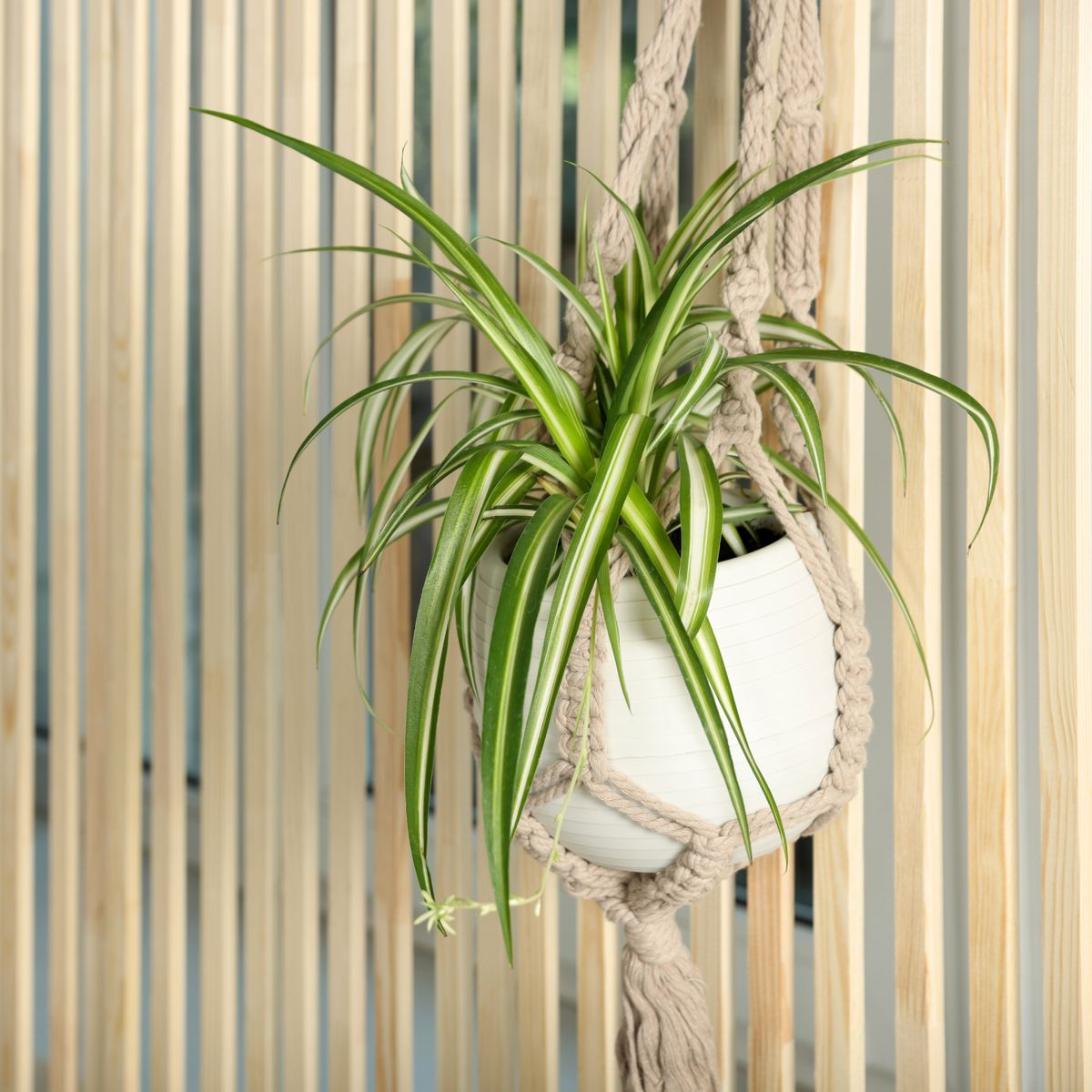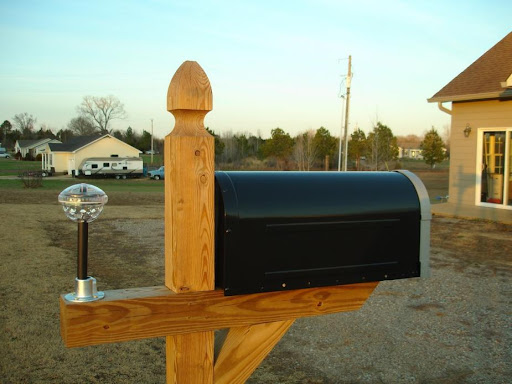[ad_1]
Summertime is approaching and bringing the sweltering heat with it. We’ll be reaching for ice cream, ice buckets, and … ice plants! Their flowers won’t cool your garden down, but they do add an icy appearance. Each petal is covered with translucent hairs that shimmer like ice crystals in the sunlight. Any ice plant variety you choose is sure to make a splash in your summer garden!
Despite their name, ice plants aren’t cold hardy. In fact, they’re drought-tolerant succulents that grow in hot climates. Ice plants thrive in desert and rock gardens. If you live somewhere hot and dry, these plants will feel right at home in your garden.
Ice plants are also excellent ground covers, edgings, and container plants (they also provide erosion control). They sprawl across the ground and form a tidy carpet of small flowers. Their blooms come in a rainbow of yellow, orange, pink, purple, or white. Plus, ice plants keep their vivid blooms for several months, so they’re a quick way to liven up your landscaping for the whole summer growing season.
You’ll find ice plants to be very low-maintenance. Once established, it appreciates neglect and basically takes care of itself. All you have to do is set it up for success. This guide will explain how to grow the very best ice plants in your home garden.
Good Products At Amazon For Ice Plants:
Quick Care Guide

| Common Name | Ice plant, cold hardy ice plant, trailing ice plant, sea fig, Hottentot |
| Scientific Name | Lampranthus, Delosperma, and Carpobrotus edulis (plus many more!) |
| Family | Aizoaceae |
| Height & Spread | 0.5 feet tall, 2 feet wide |
| Light | Full sun |
| Soil | Sandy loam, well-draining |
| Water | Sparse watering |
| Pests & Diseases | Aphids, mealybugs, downy mildew |
All About The Ice Plant

“Ice plant” is a very common moniker that’s applied to hundreds of species within the Aizoaceae family (so much so that it’s nicknamed the Iceplant family). Of the 135 genera in this family, ice plants are mostly concentrated in the Delosperma and Lampranthus genera. These two are very similar-looking and typically told apart by the presence of a seed pod membrane (spoiler alert: Delosperma doesn’t have one). Other species outside of the Aizoaceae family may be called ice plant as well, but this family is usually what the name refers to.
Here are some common iceplant species you’re likely to come across:
- Delosperma cooperi (Cooper’s ice plant) – blooms magenta
- Delosperma ‘Kelaidis’ – light pink flowers, hardy to zone 4
- Delosperma nubigenum – yellow flowers, most cold hardy
- Delosperma ‘Jewel of the Desert Garnet’ – red and purple bi-color flowers
- Lampranthus spectabilis – white, purple, or pink flowers, spreads quickly
- Lampranthus aurantiacus – orange flowers, early bloomer
- Carpobrotus edulis – pink, yellow, or white flowers, invasive in coastal California
Besides “Iceplant”, you may hear these plants called hardy ice plant, trailing ice plant, sea fig, purple ice plant, or Hottentot. One species in particular, Carpobrotus edulis, is nicknamed “Highway Iceplant” because it pops up all along the California coast. Despite varying common names, these species are generally very similar, both in appearance and growth habits. Because of this, we’ll give some basic growing requirements that apply to whichever species of iceplant you choose.
Ice plant Delosperma and Lampranthus hail from east and south Africa, which explains why they aren’t that cold hardy and prefer drought-like conditions in higher elevations. Ice plant is still pretty new to the US – it was just introduced in the 90s. Delosperma cooperi, also called Cooper’s ice plant, was the first to be introduced, thanks to Panayoti Kelaidis from the Denver Botanic Garden. Since then, many species of ice plants have been grown as perennial evergreen in zones 5-10. Because they’re sensitive to cold weather, ice plant needs extra care in order to survive the winter and early spring in zones 5-7.
Any ice plant variety is pretty short. Usually, they don’t even clear half a foot. However, they’ll spread up to 2 feet wide, making them fantastic ground covers. This succulent grows by sending up shoots from central stems. Flowers unfold at the tip of each shoot while roots extend from the node below. Thanks to this growth pattern, ice plant is super easy to propagate.
Succulents aren’t all chunky rosettes. Ice plants’ water-filled leaves are long and thin, like little green beans. They’re spaced far apart on each stem, much like Portulaca or String of Bananas. They’re usually grass green but may turn a plummy purple in the winter months. Even though it’s evergreen, ice plants may lose some foliage in colder winters.
Ice plant blooms consistently from late spring to early fall (depending on the species). Each bloom is only 1-2 inches in diameter, but can hold up to 100 petals! Those long-blooming, icy petals are long and skinny. They surround white centers full of hairy-looking stamens.
Ice plants are deer resistant and attract butterflies. It’s also edible! The evergreen leaves are refreshingly crunchy and can be added to salads. Since such a wide range of plants go by this name, we recommend that you double-check that the exact species you have is safe to eat.
Ice Plant Care

They may be low-maintenance, but certain demands have to be met before your ice plant takes care of itself. We’ll cover everything ice plants like and, just as importantly, everything they hate.
Sun and Temperature
Ice plants love to be in full sun. They may tolerate some light shade now and then, but lots of sunlight will bring out the best in these ice crystals of flowers. To complement all that light, ice plants also like to be hot. Even the hardy ice plants species aren’t very cold hardy
In hot, dry climates, fall planting is preferable to mid-spring or summer. That way, the perennial plant has time to get established before the heat hits. The opposite goes for cold climates, where the plants get established by mid-summer before the cold settles in. For those cold zones, you may want to grow cold-hardy ice plants in pots. Then, the pots will be easy to bring inside if the temperature gets too low in winter or spring. You’ll also be able to control the wet soil levels more easily.
Water and Humidity
We say that this plant is drought-tolerant, but it’s really drought-loving. You should only be watering every few weeks unless the weather is exceptionally hot. Wait until the wet soil dries out completely and then 5-7 days more before watering deeply.
Ice plants like to be very dry throughout the winter. Cut back on watering starting in late fall. If you get snow or hard frost in the winter, don’t water them at all. The leaves might shrink a little from lack of moisture, but that’s preferable to freezing from the inside out!
Ice plant, like most succulents, doesn’t care much for humidity. Too much is an invitation to pest infestations and rot. Make sure that your ice plant is placed somewhere dry and pruned to allow good air circulation in the foliage.
Soil

Soil texture is just as important as sunlight for ice plant care. You’ll need sandy soil with good drainage. Ice plants will refuse to grow in a clay medium. A well-draining soil is especially important during the winter in colder climates. Too much moisture stored underground can quickly kill the roots in cooler temperatures.
Ice plants don’t care much about being planted in rich soil. In fact, they fare well in poor soil (which comes in handy with rock gardens and gravelly soils!). However, you can add some organic matter if growth is slowing. In the winter, you may want to add a layer of straw, pine needles, or a frost blanket to keep excess moisture out of the dry soil.
Fertilizing
You can get away with skipping fertilizer here. However, like compost, you can add a little if your ice plant’s growth is slowing or there aren’t as many daisy-like flowers as you’d hoped. Very sparsely use a fertilizer with a little extra phosphorous, like a 1-3-2 ratio. However, don’t add just straight phosphorous, as nitrogen and potassium are also essential for flowering.
Pruning
Pruning isn’t strictly necessary but can be done to clean up the ground cover and prevent pest infestations. In mid-spring, deadhead ice plant flowers and clip off any stems that didn’t make it through the winter. If your ice plant ground cover is getting pretty dense, thin it throughout the summer to keep good air circulation.
Propagating Ice Plants
Like most friendly succulents, you can easily propagate ice plants from cuttings. An ice plant sends out roots as it spreads, so all you have to do is divide it into individual plants. In late spring, search for shoots that are sprouting roots or have already settled in the group. Clip the connecting stem and move the newly independent shoot and its roots to their new home away from the original plant.
Hardy ice plant may self-seed and can be planted from seed. However, propagation via cuttings is far simpler and faster.
Troubleshooting

Not only is it low-maintenance, but ice plants are also drama-free! You’ll rarely have problems with this well-behaved plant. If you do though, here’s what you may be encountering.
Growing Problems
When it comes to any succulent, we have to warn about overwatering and root rot. If they get too much moisture, ice plants’ foliage will wither, turn yellow, and die. You should be watering ice plant delosperma or lampranthus very sparsely. It’s also essential to have well-drained soil. If your ice plant shows signs of overwatering, quickly transplant it into sandier soil. Don’t water the plant again until the leaves have perked up.
Another typical succulent problem that applies to ice plants is etiolation. If it doesn’t get enough sunlight, your ice plants will stretch out in search of more light. This results in leggy growth and gaps in your ice plant ground cover. Unfortunately, already-stretched stems won’t go back to normal when given more light. The best you can do is prune back the leggy stems and provide lots of sunlight for the new growth.
Pests
We’re looking at the usual suspects here: aphids and mealybugs. These pests are drawn to most types of succulents – and for good reason! Aphids and mealybugs both feed on plant sap, and succulents are plump full of it. If a large population of these pests attacks your ice plant, the plant’s growth will be stunted, its foliage will wilt, and it will eventually die.
Neem oil usually does the trick by deterring these pests (and many more!). You can also try insecticidal soap or diatomaceous earth. For extreme cases, apply pyrethrin spray or spinosad spray. Of course, the best thing to do is prevent infestations. This can be done by keeping the ice plant free from debris and not overwatering.
Diseases
Ice plants have only recently been affected by a specific type of downy mildew. A fungus species that causes downy mildew was discovered in California in 2019 and is believed to only affect ice plants. It has been spreading, so if you live in California, be on the lookout for symptoms. The mold will coat the foliage in a blue-grey growth that destroys the plant tissue.
Downy mildew is encouraged by cool and wet conditions, the exact opposite of what you should be doing with ice plant care. This disease is very difficult to eradicate once established, especially since it’s so new to us. You can try applying a fungicide, but the chances of complete recovery are slim. The best thing you can do for your ice plants is to care for them well in order to prevent this disease.
Frequently Asked Questions

Q: Do ice plants come back every year?
A: As long as you live in zone 5 or warmer, your perennial purple ice plant will bloom reliably each year. In fact, hardy ice plant is evergreen, so you’ll have some foliage throughout the winter months.
Q: Does ice plant need full sun?
A: Yes, yes, yes! You’ll get lots of long-blooming, purple ice plant flowers as long as you give them plenty of direct sunlight. This perennial groundcover can handle light shade from time to time, but much prefers a sunny spot and drought-like conditions in the garden.
Q: Is ice plant invasive?
A: They aren’t typically invasive, but one type of ice plants – Carpobrotus edulis – has become an invasive species in California.
Q: How fast does ice plant spread?
A: This depends entirely on the species. Overall though, ice plants grow fairly fast, making it a great ground cover for sunny slopes.
Q: Why is ice plant a problem for California?
A: Carpobrotus edulis is just one species of ice plant that gives the rest a bad name. It’s an invasive plant that has more than made itself at home along the Californian coast. The other species of ice plant, Delosperma and Lampranthus, aren’t such problem children.
Q: Should you deadhead ice plants?
A: It’s not necessary, but deadheading spent ice plant flowers is recommended to help prevent pests and diseases.
Q: Do ice plants attract bees?
A: Yes! Ice plants’ daisy-like flowers are a magnet for bees, butterflies, and even hummingbirds.
Q: Is ice plant poisonous?
A: No. In fact, many types of ice plants are edible! However, there is one species in the ice plant family, the slender ice plant, that’s known to be toxic to sheep.
The Green Thumbs Behind This Article:
[ad_2]
Source link







 + Planting String of Watermelon Succulents
+ Planting String of Watermelon Succulents  with Garden Answer
with Garden Answer


